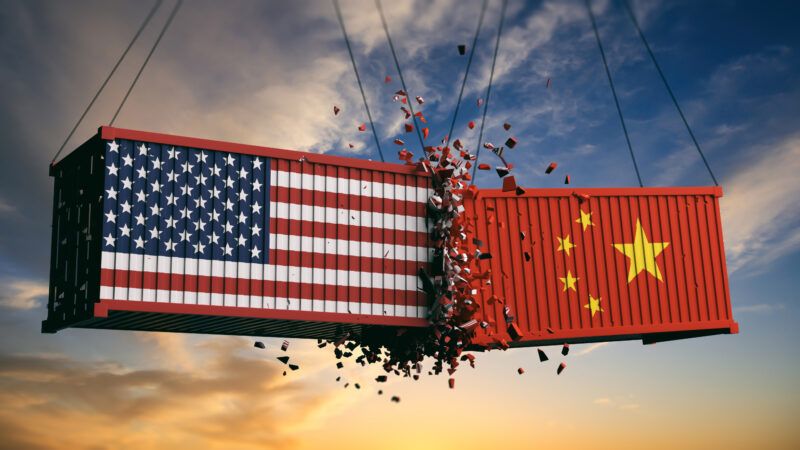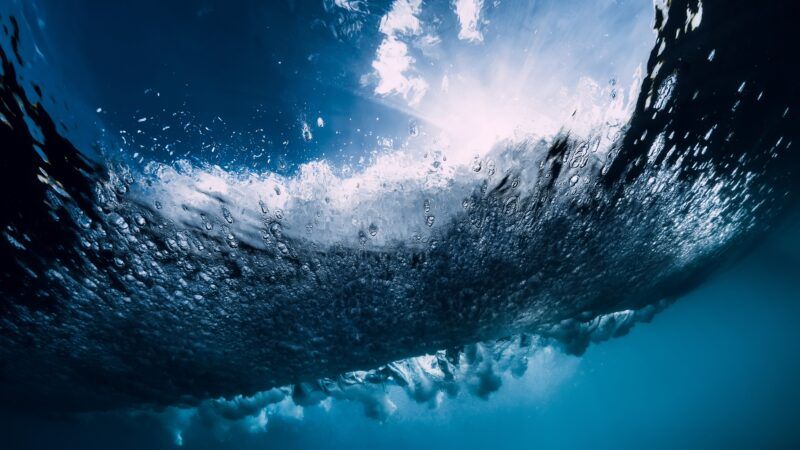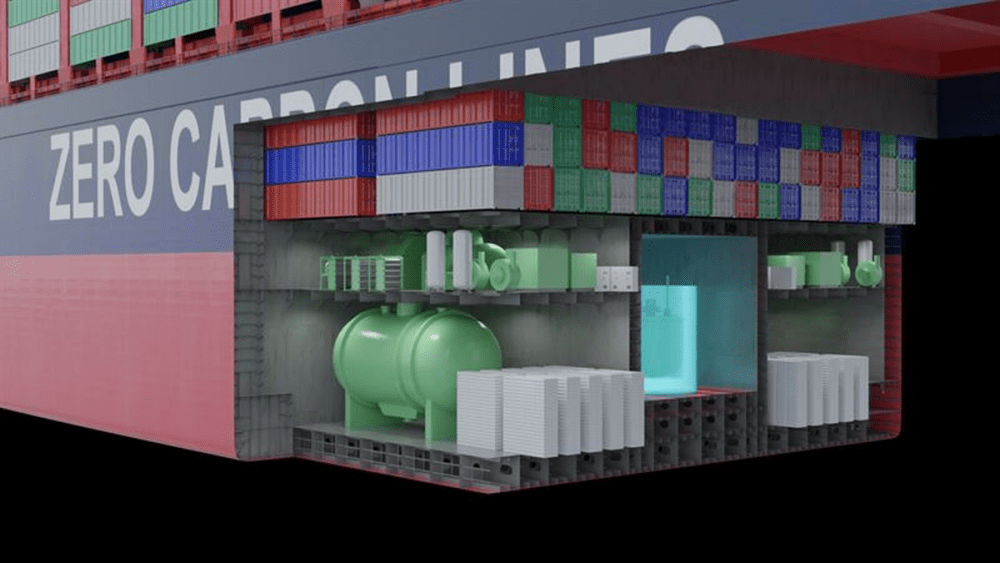
Nuclear power in shipping: a reaction to decarbonization
Despite raising suspicions, the new generation of reactors is positioning nuclear power as one of the most viable and interesting options for decarbonizing the shipping sector. We analyze the pros and cons.

The use of nuclear power in the maritime sector is not new; military ships and submarines have been powered by nuclear energy for more than 60 years. So are the icebreaker ships that make their way through the Arctic.
In a distant 1959 it was also used, for the first time, in the merchant vessel N.S. Savannah, as part of the Atoms for Peace program to promote peaceful uses of atomic energy after the bombing of Hiroshima and Nagasaki during World War II. It was operational from 1962 to 1972, but its pressurized light water reactor (LWR) was too complex and expensive for the ship to be profitable.
New-generation reactors, unlike those that power nuclear submarines and aircraft carriers, use less enriched uranium fuel that could be used for commercial purposes, according to experts who advocate the use of nuclear power in shipping.
Now, in the 21st century, the use of nuclear power has entered the list of other candidates, such as hydrogen, methanol or ammonia, always with the aim of decarbonizing the maritime transport sector.
As Maurici Hervas, CENIT researcher and PhD student in energy transition at the Port of Barcelona, points out, these alternatives have advantages and disadvantages. In any case, they are not incompatible with each other, as each one has certain characteristics that make them more suitable, depending on the type of goods transported or the distances the ships have to travel without refueling.
“When we talk about energy and transportation, a key concept is energy density. In the case of maritime, the key thing is volumetric density. Weight, while important, is not as restrictive as volume, which can detract from cargo space and affect the business model of shipping lines. Therefore, the interest lies in those fuels or energy sources with high volumetric energy densities,” argues Hervas.
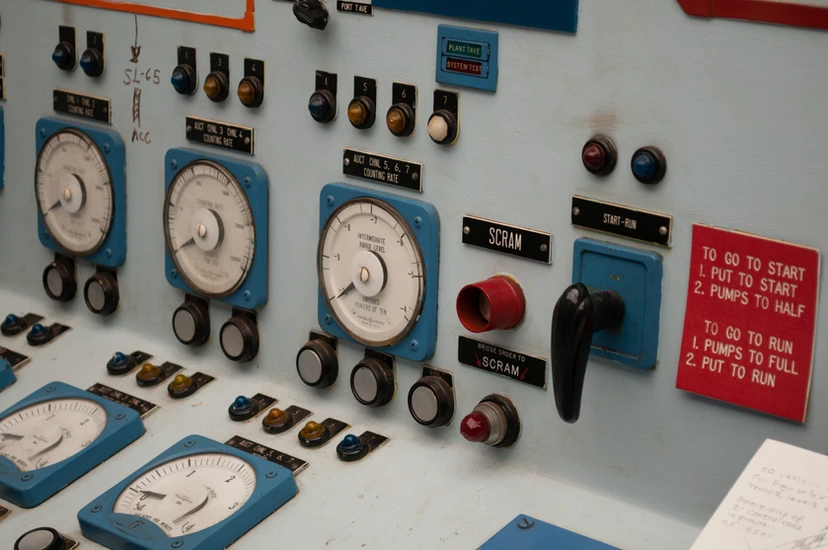
The advantages of nuclear in maritime transport
In this scenario, hydrogen becomes an uninteresting alternative, since it is a very small molecule “and difficult to contain” and requires cryogenic and hermetically sealed tanks to prevent leaks. The same applies to the “greener” versions of methanol and ammonia, since they are based on the hydrogen molecule itself, according to Hervas.
Nuclear energy, on the other hand, presents a much more attractive volumetric density for shipping, in addition to other benefits, thanks to the new generation of reactors:
- No refueling required
Many container ships and oil tankers require systems of up to 50 megawatts, enough energy to power about 50,000 homes. In contrast, today's nuclear-powered submarines and aircraft carriers use highly enriched uranium and light water reactors, allowing them to operate for 30 years or more without refueling.
New generation reactors can perform a similar function using a less enriched uranium fuel that could be used for commercial purposes.
“This would mean a paradigm shift in logistics, as it would not depend on the volatility of fuel prices that impact fleet management, nor on planning its scales according to bunkering needs,” Hervas stresses.
- Pollutes less than other options
According to the International Atomic Energy Agency (IAEA), compared to other sustainable sources of electricity generation, solar energy requires 17 times more material and occupies 46 times more land to produce one unit of power. In fact, nuclear already provides about a quarter of the world's low-carbon electricity.
“It would allow shipping companies to cope with the European regulatory package such as FuelEU Maritime + ReFuelEU, as this measure pools the emissions generated by a fleet as a whole and allows different types of fuels to be combined with the ultimate goal of reducing overall carbon emissions,” argues the new fuels expert.
- It is an energy that promotes circularity
Much of the nuclear waste can be used to produce energy using new-generation nuclear technologies. That is why, says Hervas, the industry does not speak of “nuclear waste”. “The new technology used in fast reactors makes it possible to reuse the fuel and put it to other uses,” he stresses.
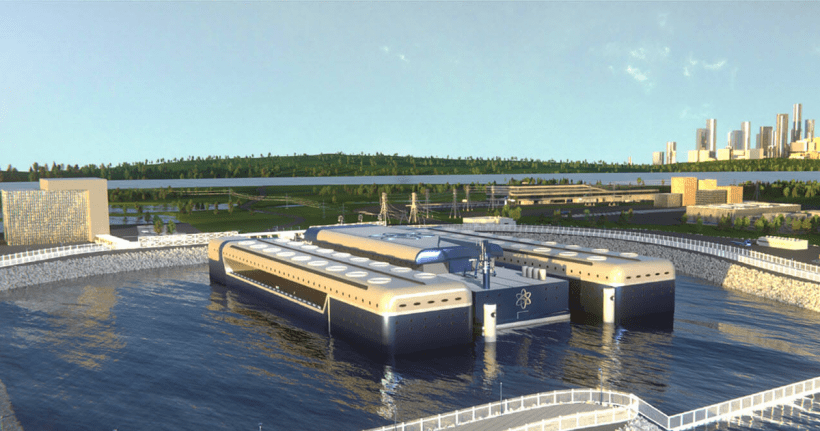
The new generation of nuclear reactors, key for transportation
“Most of the reactors currently in use belong to the third generation, while the fourth generation, currently in the research and development phase, is the one that will open up a new field of possibilities,” says Hervas.
One of the keys to this new generation of five types of nuclear reactors is that they use alternative coolants that improve safety over traditional designs.
It uses uranium dissolved in a liquid mixture of molten fluoride salts to generate heat through a controlled nuclear fission chain reaction in the core. The molten salt acts as a coolant and moderator, maintaining the chain reaction. Molten salt reactors are fueled for life, so they do not need to be refueled.
A nuclear heat pipe (low-pressure microreactor) is a passive heat transfer device. Uranium is used as fuel to generate heat through a controlled nuclear fission chain reaction in the reactor core.
This category has been transformed into small modular reactors that could be used on board. They use uranium as fuel to generate heat through a controlled nuclear fission chain reaction. The heat is transferred to the coolant, which in a PWR is usually tap water.
High-temperature gas reactors are advanced nuclear reactors that use a mixture of fuel types and employ helium gas as a coolant to extract heat for electricity or thermal power generation. They have passive safety systems, such as graphite moderation and ceramic-coated fuel for reliable and safe operation.
They use liquid metals as coolants instead of water, which allows for higher operating temperatures and higher thermal efficiency. These reactors are also designed with inherent safety features, as the coolants do not react with air or water, reducing the risk of steam explosions or hydrogen production in the event of a leak.
Hervas highlights passive safety as the most important element of the fourth generation of nuclear reactors. He also stresses that there is no need for nuclear energy experts on board in the event of an incident.
“The fourth generation of smaller reactors explores different technologies that allow these reactors to serve different purposes and that, in addition, will be able to be controlled and managed digitally remotely, according to standards to be set by the IAEA and the International Maritime Organization (IMO),” he adds.
The key to increasing confidence in nuclear energy lies, according to experts, in the fact that the new generation of reactors is based on passive safety technologies in which there will be little human intervention and no need for refueling; they will operate like a black box. However, they warn that the reactors will have to be protected so that they do not fall into unwanted hands when they sail in uncontrolled waters.
History and public opinion, 'enemies' of nuclear energy
The accidents at the Chernobyl (1986) or Fukushima (2011) nuclear power plants, the nuclear threats during the Cold War or the nuclear program being developed by North Korea have undermined the reputation of nuclear energy among the civilian population, which looks at it with fear, beyond considering it as a green energy of the present and the future.
“On the one hand, it is an energy that is not perceptible to humans because it is odorless, innocuous and does not generate heat. This creates a feeling of lack of control that leads to panic among human beings. Secondly, although there have been very few accidents throughout history, their severity is very serious,” says Hervas.
The key to increasing confidence lies, according to the expert, in conveying to society that this new generation of reactors is based on passive safety technologies in which there will be little human intervention or need for refueling, since they will function as a black box. However, “it will be necessary to protect the reactors so that they do not fall into undesired hands when they sail in uncontrolled waters,” he warns.
Another key aspect is regulatory, both on the part of the IAEA and the IMO. “It is advisable not to rush this point, as a lot of regulation is needed from both and they will need to understand each other, as these organizations come from two very different sectors,” he recommends.
In this sense, Hervas welcomes the creation of NEMO, the Nuclear Energy Maritime Organization, which brings together both worlds to advance in this direction.
“It is relevant to point out that much more time has passed between the third and fourth generation reactors than between the previous ones for a question not of physics or nuclear surveillance, but for a question related to materials technology and the fact that these use new technologies that, in no case, are an improved iteration of the previous ones,” he says.
Hervas also believes that it is important to communicate to society as a whole the message of how this energy can be fundamental to decarbonize the sector.
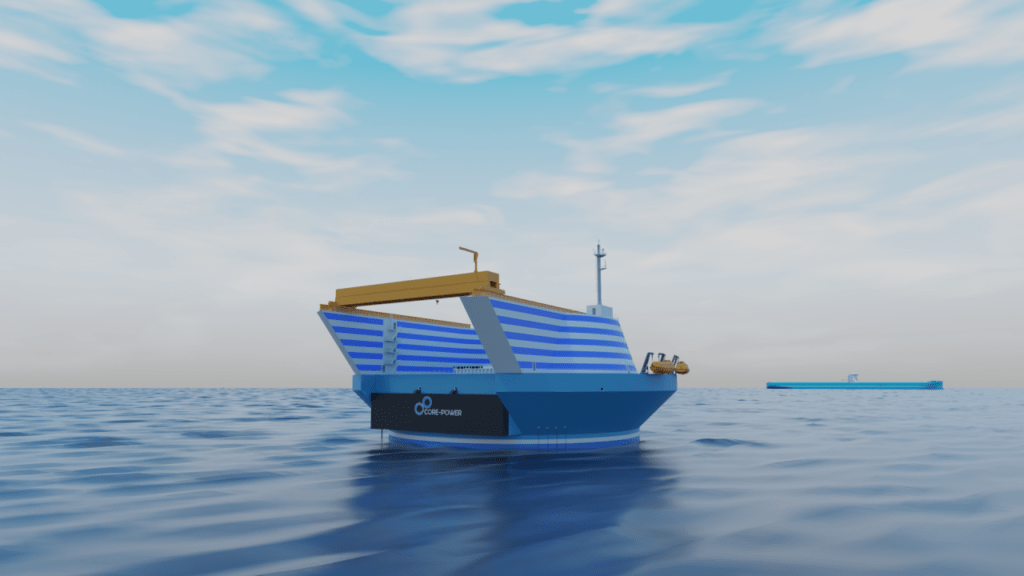
First tests and trials
Both shipping companies and other companies and institutions related to this energy are studying the use of nuclear power in their fleets and in the shipping sector.
- This is the case of Italy's RINA, one of the world's leading ship certification companies, which is studying the use of nuclear fuel and is involved in a feasibility study together with Fincantieri, one of the world's largest shipbuilding groups.RINA CEO Ugo Salerno says that container ships, which require considerable power, are among the segments of shipping that could be viable for nuclear fuel, but believes it will most likely be “seven to 10 years” before production is viable.
- Japanese shipping giant Imabari Shipbuilding, along with a dozen other companies, has invested $80 million in British start-up Core Power to develop a floating nuclear power plant with SMR technology that could one day also be used on ships.
- And in South Korea, nine organizations, including shipping companies and the Korea Atomic Energy Research Institute, plan to develop and test large SMR-powered ships.
- For its part, the U.S. Department of Energy commissioned the American Bureau of Shipping to conduct a recently completed study to identify suitable reactors for a merchant ship and to describe the R&D challenges that would need to be overcome before nuclear-powered shipping could become a commercial reality.
- Finally, Maersk has decided to join an innovative study led by Lloyd's Register (LR) and also UK-based Core Power that will investigate the requirements for updated safety standards along with improving the operational and regulatory understanding required for the application of nuclear power in container shipping.
Hervas estimates that the implementation of nuclear power in shipping could occur within a decade for intercontinental ships and before 2050 for ships covering regional distances.
He does not, however, see its use on passenger ships as viable.
- And what role will the ports play?
In the case of nuclear-powered shipping, the role of ports will be different from that adopted with traditional fuels since, in general, they would not be responsible for supplying this fuel to ships or storing it in their facilities.
“In any case, those ports that offer this service, which in principle would be a minority, would allocate a terminal where the maintenance of the reactors and the relevant checks and inspections would be carried out,” concludes Hervas.



